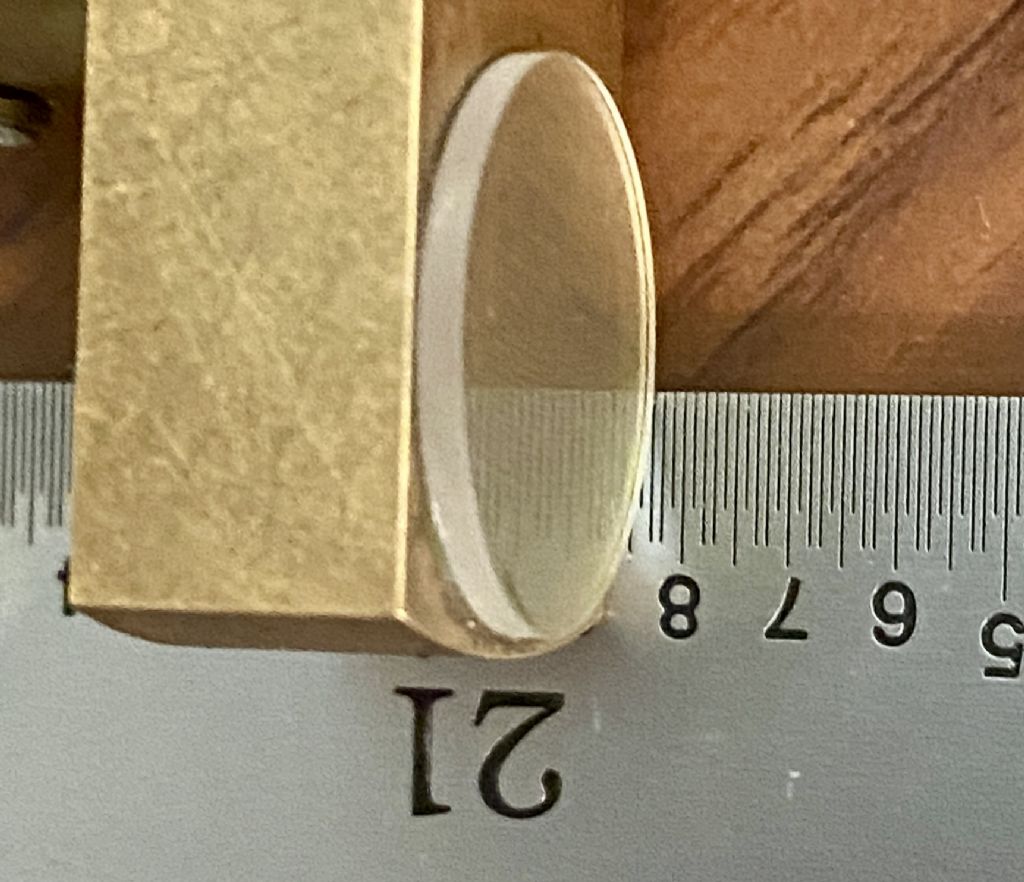I developed a nagging suspicion that my last measurement of within 0.008% of the predicted g was a little too good, and too easily obtained to be that good.
After adding a base for the pendulum's support structure, I balanced the pendulum such that the normal and reverse periods were identical to better than a part in 1000. This reduces the contribution of the center of gravity measurement to a level making it nearly irrelevant. Note that when balanced in this way, the centers of oscillation of the pendulum are coincident with the pivots. Therefore, L in the ideal pendulum formula becomes the distance between pivots. And … my new, more precise measurements did not improve the accuracy of g.
I then performed a basic error propagation analysis and concluded that my earlier finding was indeed more down to luck than actual precision. The problem is the measurement of L. For this, I used an engineer's scale (3 feet) with graduations of 0.01". How much precision can I get from this for measurements of about 2 feet?
For example, what value would you accord this example shot (just taken with my phone camera):

In this case, it seems clear: the anvil lies pretty much right on 20.83". Pixels are hard to see, but it's within one pixel of that, I believe. If it lay somewhere else, well, trust me when I say that interpolation is not easy, especially when trying to find the edge of a transparent surface. In this case, it's easier to see since it lies on a black line.
I also did tests that calibrated a much better camera and macro lens at a per-pixel level, to about 0.00045" per pixel, and I found that I could interpolate to about 0.002" with decent confidence (i.e. +/- 0.001" ). But this is almost certainly encroaching on the precision of the ruler itself (which I separately estimated to be within about 0.0013" over 35" ).
I did a basic error propagation analysis that showed that I'm almost completely limited by this measurement (the period T is measured to far, far greater precision). I've thus concluded that this project has measured g to all the precision that is currently possible for me to obtain:
g = 9.79 +/- 0.02 m/s^2.
This easily matches the estimate for g within those limits as well as g for the nearest known measured value.
I've thought about building a traveling microscope + glass scale that would likely do a little better. But it would be best if it's hung vertically with the pendulum rather than horizontally. Other than that or bringing the pendulum to NIST, that's all I can get.
(As an aside: With all due respect to Henry Kater, I have developed doubts about his claims, including that he measured L, also with just a ruler, albeit with a microscope rather than a macro setup, to a precision 100 times greater than the above.)
It was a fun project. 😀
Edited By S K on 02/03/2023 18:36:40
S K.





